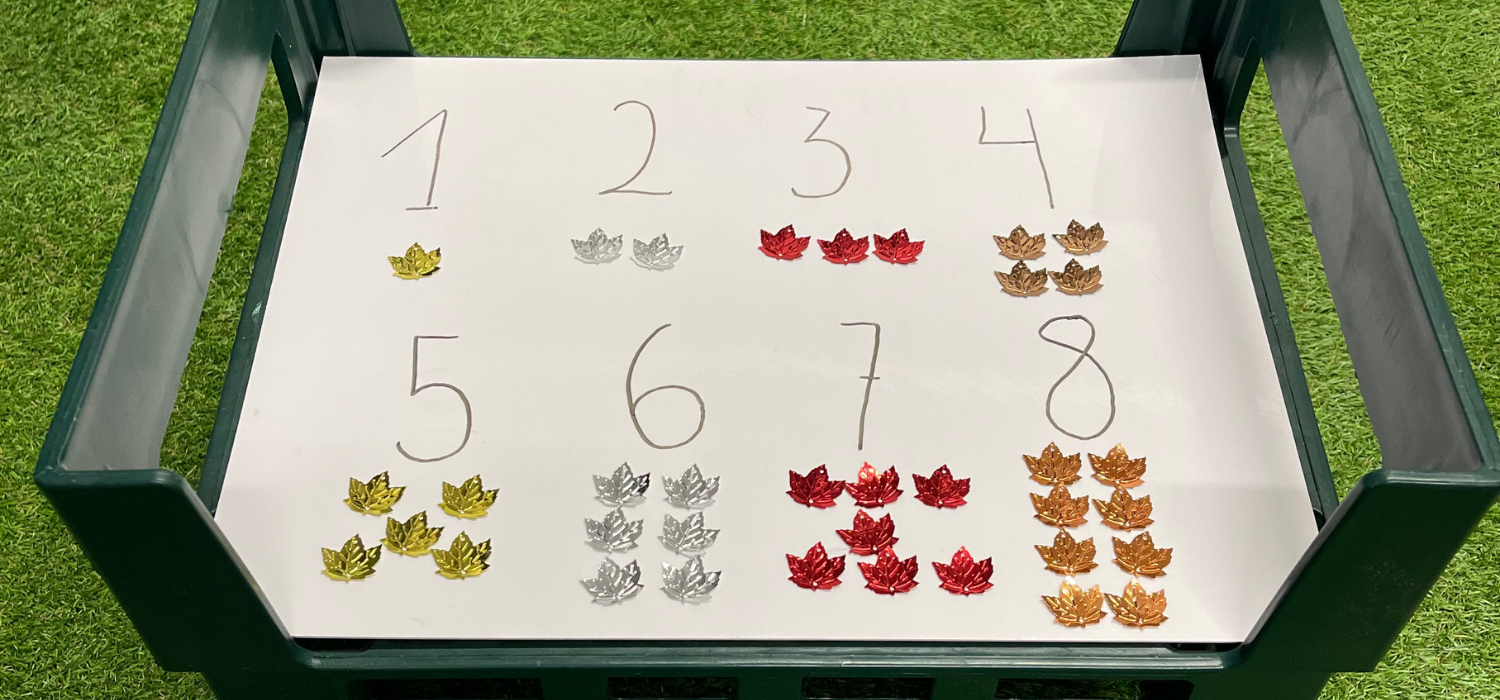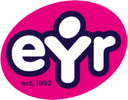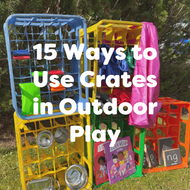15 Ways to Use Upcycled Crates in Outdoor Play
Posted by EYR Team on 13th Oct 2021
read more
Better out than in!
Outdoor learning has long been advocated as an essential element of early year’s development. It not only refreshes the children’s learning environment but it provides them with a space to explore, gain more experiences and develop an appreciation for nature and their environment that they would not otherwise get from the classroom.
Outdoor loose parts are a great resource to promote unstructured outdoor play. Forget the rules and expectations and let the little one’s imaginations run wild. Innocuous items such as H crates and milk crates, in particular, are quickly becoming a popular resource within outdoor loose parts play. Multi-functional, highly versatile and sturdy, it is easy to see why. From motor skills and physical development to imaginative play and improving communication, they are guaranteed to support all areas of learning and development whilst facilitating open-ended play.
In this blog we will offer 15 different ways to use our crates in outdoor play, from the less obvious to the ever more obscure. You are guaranteed to find a new and exciting way to engage your little ones in outdoor learning and play.
Den Building

Majestic castle? Mysterious cave? Play den? Or simply a space to hide. Den building provides children with a “home from home” that is completely their own and can be used accordingly. Our crates are a great tool with which to make a den. Lightweight and easy to lift, children can stack crates, throw a sheet across and secure with pegs and hang out black-out sheets for sensory play. This activity allows them to use their imagination and design their den to their liking. All whilst supporting their fine and gross motor skills in the assembly!
Physical Development

A great way to incorporate the crates in outdoor play is to create an obstacle course! Using additional resources like planks and stumps, children can create bridges and platforms, making their own trails. The lightweight nature of the crates allows children to do this independently, giving them the opportunity to challenge themselves creatively. The obstacle course itself is a great way for children to practice coordination skills. Plus, once a course is complete, the children can move the objects to create new and more challenging routes.
Water Channelling

Using the larger holes within the crates, children can add wooden chutes, bamboo guttering, pipes ,water channel stands and crates to create a water channel. This is a great opportunity for the little ones to explore scientific concepts like gravity as they engineer and build their own platforms and water systems. Encourage the little ones to stack crates higher and examine the effects on the speed of the water.
Role Play

Will it be a shop? A market stall? A desk? Using the crates, children can create endless real world scenarios that can be used for role play. Why not ask questions about the role they are playing and the scenario they have created. Again this activity will promote fine and gross motor skills. Additionally, it requires children to think outside of the box when creating a role play set up from simple materials such as crates.
Outdoor Classrooms

One way to use crates is to create “zones” that can promote different areas of learning. For example in one area of the playground you could create a “reading corner” using crates filled with books. In another area you could set up an “exploration zone”. This could have nature pieces and loose parts for the little ones to examine.
Another way to incorporate crates in outdoor learning is to combine them with resources, like our whiteboard crate toppers. This combination of crates and toppers is a great way to move the classroom outside without needing to lift or carry heavy resources. The perfect outdoor learning resource!
Small World Play

Again using the combination of crates with toppers, children can engage in small world play. Using the crates as a solid surface for activities. The grass topper brings in the additional element of nature that children can use to spark their imaginations. Try and encourage children to complement their small world set ups with pieces collected from their environment. For example twigs, pine cones and leaves could be used to build a house for the characters being played with.
Weaving

Using crates in play can offer an endless stream of activities if you think creatively. One such activity that may not have initially sprung to mind is weaving! Our H crates have a base that is made up of multiple square holes making it perfect for threading and weaving. Children can use all sorts of materials in this activity which is fantastic for developing their fine motor skills. String, ribbon and various threads are a great option but why not also try incorporating the environment into this activity? Grass, leaves and flowers can also be woven into the gaps to create a beautiful pattern inspired by nature.
Plant a Classroom Garden

Milk crates offer a great opportunity to create a space saving classroom garden, whether it’s one or a dozen, planting herbs and flowers in these crates offers a dimension of versatility for even the smallest of settings. Simply line the crate with some non-woven fabric, add your soil and get planting! Using the crates as planters is a great way to get children involved in gardening as they are at the perfect height for curious little minds and hands.
Sorting

Crates naturally offer the perfect solution for housing various objects. One way to capitalise on this for outdoor play is to use crates for investigative sensory activities. Why not provide children with a pile of random resources and nature treasures and ask them to sort them into the various crates? You could ask them to do this by colour, size, shape and more!
Creating Vehicles

The simplicity of the crates naturally gives rise to endless imaginative play opportunities. One such opportunity is for children to sit in the crates themselves and let them transform into cars, trains, planes and even boats! Children can use their imagination or gather resources to dress their crates, for example adding a sail for a boat made out of an old sheet or lining the crates up and adding some tyres to turn them into a train with carriages!
Circle Time

Taking learning outdoors does not need lots of resources. Circle time can easily be facilitated outside using the crates and popping a cushion, or our specially designed cushion crate toppers on top for comfort. Easy to store and lightweight to carry, the crates and floor cushions will have an advantage over lugging out stacks of chairs and tables for such an activity.
Mud Kitchens

Mud kitchens are a popular outdoor play resource but can be very costly. Create your own affordable kitchen using crates and planks of wood and add in any old kitchen utensils like pans, bowls, spoons, cups etc. Using crates and planks gives you the flexibility to make a larger kitchen to be used by multiple children, or make a singular small kitchen for one child.
Construction

Crates are a great construction resource as their lightweight nature makes them easy for little ones to lift and carry. Using them for construction outdoors provides children with opportunities to create larger masterpieces, work together and collaborate. Crates are a great resource to combine with other kids' construction toys including giant foam building blocks and mini bricks.
Versatile Outdoor Storage

Naturally when considering crates for outdoor play, storage is an obvious suggestion. However, the versatile nature of the milk and H crates mean that there are endless ways to use the crates as storage! Why not try tying the milk crates to a fence at child height to provide open storage for toys, books etc. that children can access easily? Or, stack them on top of one another for a larger, open, display-style storage unit that can be used to house toys, loose parts, jackets etc. Naturally waterproof and sturdy, they can be left outdoors to store any manner of outdoor play resources.
Bug Hotel

Creating a bug hotel is a great way to use the crates outdoors. Once again offering versatility to suit any size setting, you can create a bug hotel out of one singular crate or stack several together to create a much larger minibeast attraction. Simply line your crate with some old fabric and fill it with materials such as toilet rolls, old plant pots, twigs, leaves, bamboo sticks, bamboo canes, pebbles, stones, bark and straw.
We would love to see how you use your crates in outdoor play. Tag us in your pictures and use the hashtag #explorewithEYR
Check out our outdoor loose parts collection and discover how to take outdoor learning and play to a whole new level!


